Congratulations on your new Yodify-powered site. Regardless of how you intend to use your catalog, be it as a powerful reference, lead generation, CPQ, e-Commerce or all of the above you’ve chosen the best platform to set the stage for your success.
There are a significant number of best practices that are inherent in the Yodify platform that will, over time, get your website noticed. Fast page speeds, mobile optimization, properly formatted page content, and thousands of indexable pages are standard with any Yodify site.
That being said, there are a number of additional steps you should employ to give your site the best chance of success and generate the leads, quotes, and sales you’re looking for. We’ve taken care of some key considerations, but you can and should supplement your new site with additional SEO work, website category structure, networking and sharing your site, and enhancing the product content from the Yodify Library.
Use Yodify’s SEO Tools & Integrate Google Analytics
SEO (Search Engine Optimization) is absolutely critical if you’re looking to have pages on your site rank highly. Every Yodify product is already formatted with proper titles, descriptions and more baked into the fabric of the product forms. This ensures that when your products show up on search engines, the snippets (previews of page content) are accurate, legible, and engaging. We highly recommend you go into the product pages and edit the SEO Title and SEO Description for each product.
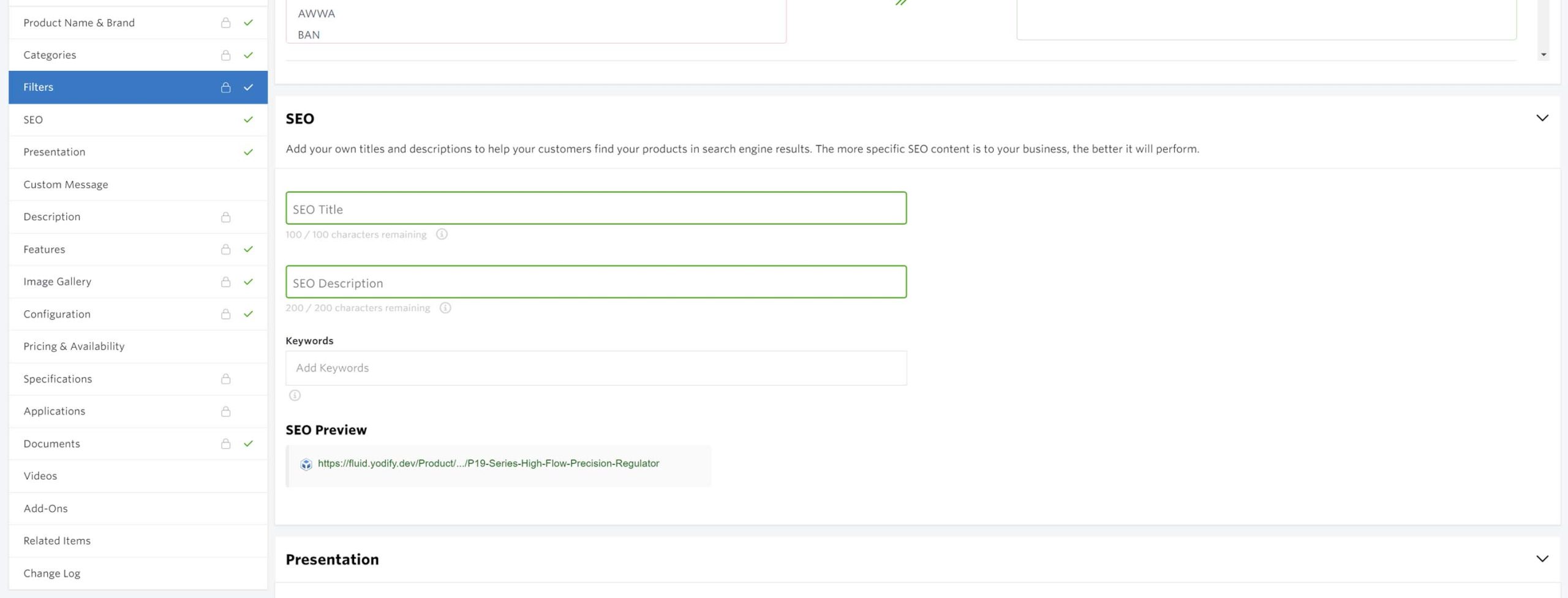
While the manufacturer’s data is accurate to the product, it doesn’t necessarily match the search habits of your customers. Highlight the specific features of the product that best suit your clients needs. Consider adding the names or brand names of some competitive product lines into the keywords section to capture traffic of potential customers searching for compatible solutions from a different manufacturer than the lines you represent. Writing your SEO content in the same phrasing and voice you imagine your customers will be searching for your product will capture more attention online. You will start to gain priority ranking as search engines index your content and users find the content they’re looking for when they click on your links.
Writing your SEO content in the same phrasing and voice you imagine your customers will be searching for your product will capture more attention online.
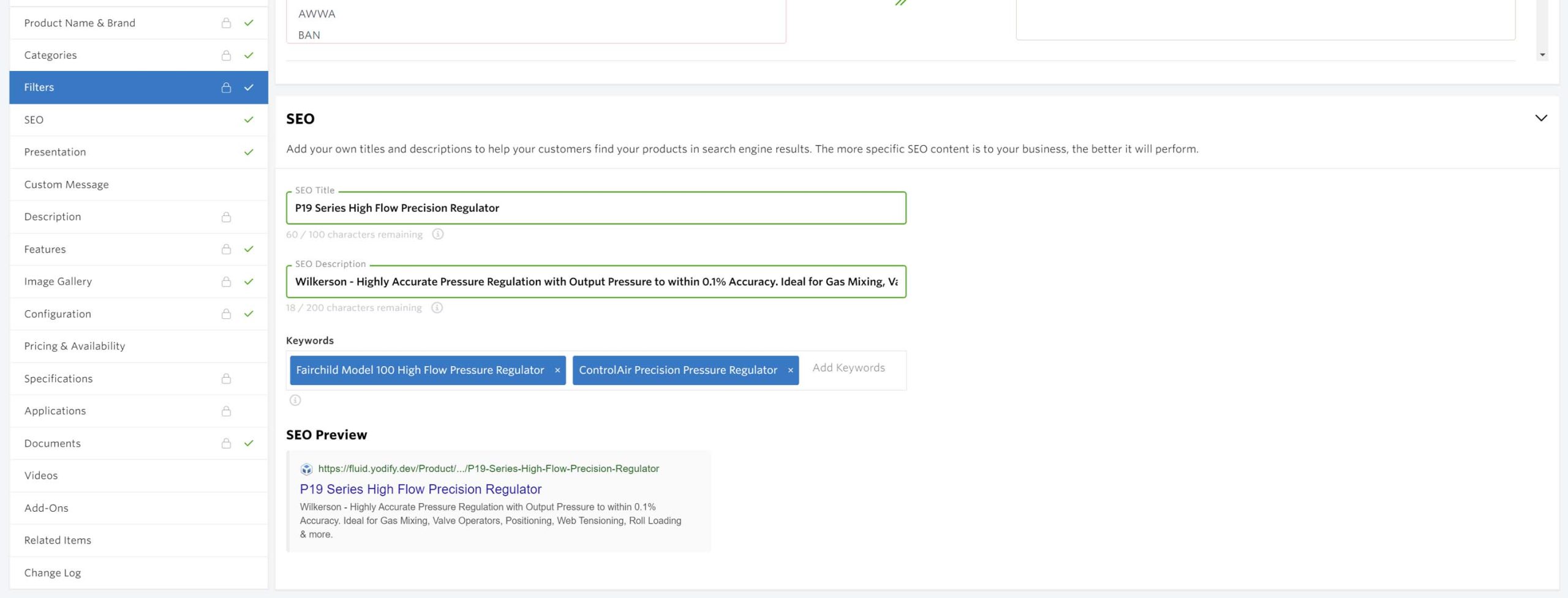
Once you’ve set up your SEO and you want to keep an eye on how your changes are affecting the traffic to your site you can set up Google Analytics and monitor traffic. To do this, the first step is registering your website at https://analytics.google.com. You will need to locate your Google GA4 tag ID, which you can find by following these instructions. Once you have your GA4 tag ID, which should be formatted as a “G – XXXXXXXX” it’s time to head back to your Yodify Seller Portal. From here follow the path Seller Portal > Site Settings > Scroll down to “Google Analytics” > Enter your GA4 tag ID into the provided field.
Once you’ve completed these steps you created a link between your Yodify Site, and Google Analytics and you will soon start to see what pages are being accessed on your site, and from where in the world the users are coming from.
Customize Your Customers Journey
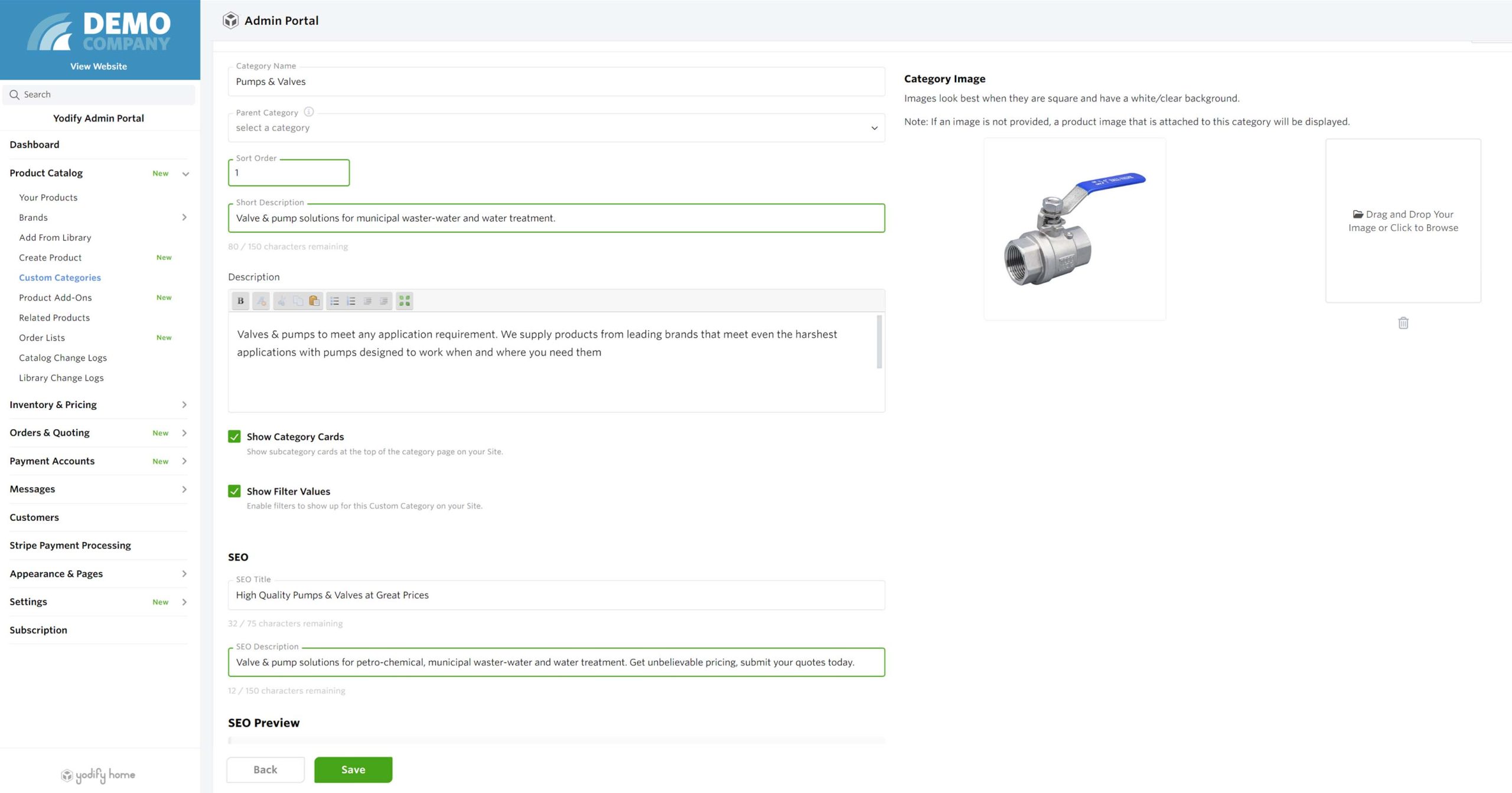
When customers do land on your site, you want them to be able to quickly find what they’re looking for, easily moving from page to page as they browse for solutions to their problems.
Yodify Library products come with pre-built categories, but by utilizing Custom Category functionality, you can create a structure for your catalog that matches your business exactly. You can easily bulk re-assign Library categories or curate by brand or product series to launch a new structure for your site that lets your customers browse by application, industry, category, or any other system that suits your needs.
Custom Categories make your site better suited to your clients and the language they use to find the solutions you provide.
Custom categories also afford you the opportunity to add additional site content to capture search terms with a description on each page, essentially turning a boring category page into a landing page tuned to your specific clientele. This is an excellent place to broadly describe the solutions each of your categories encapsulates, reinforce the territories you serve, and describe the brands found within. For example, if you create a category that houses Level and Pressure products and your primary business is offshore applications, write a description for this category that reads something like:
“Quote & buy products for your marine and offshore applications. Servicing FPSO, FLNG, and rigs, our ISO and API-certified products from global brands like Sensy, ABB, and Honeywell will keep your operations running smoothly. Proudly serving the North East in Maine, Rhode Island, and Massachusetts since 1960.”
This includes critical searchable terms, including the industries you serve, your geographical territory, the lines you represent, and more. Descriptions like this have a good chance to capture a range of searches like “Buy Honeywell Maine,” “ISO Certified for Rigs,” “Marine Products for Sale in the Northeast US,” and more.
Deploy Custom Categories and make your site better suited to your clients and the language they use to find the solutions you provide.
Make sure you give your Custom Categories a good SEO Title and Description as well.
Share, Share, Share
Once you’re happy with the content and structure of your site, it’s time to start telling people about it. Relying on organic traffic alone to build your online business is not a good short-term strategy. Unfortunately, building a web presence is not like Field of Dreams. If you build it, they may come, but not if they don’t know about it.
Use Account Member functionality to invite your existing customer base to experience your new site.
Adding site links everywhere you can builds backlinks, which are another cornerstone of search engine ranking. Backlinks are essentially road signs to your site from elsewhere on the internet. Add your site to directories, share it on social media, include it in your email signatures, ensure it is well linked from any distributor pages on your manufacturers websites, and so on.
As you’re building your backlinks, use the Account functionality in your site to invite your existing customer base to experience the convenience of your new site. Start to build momentum by leveraging your existing clientele to start visiting and using your site to the fullest, giving them the experience and advantage of having their own pricing available for reference at any time, as well as their complete quote and order history for simple re-ordering going forward. Word-of-mouth remains the most effective marketing strategy for any new business venture, your new website included. Jumpstart that conversation in as many avenues as you can.
Modify Library Content
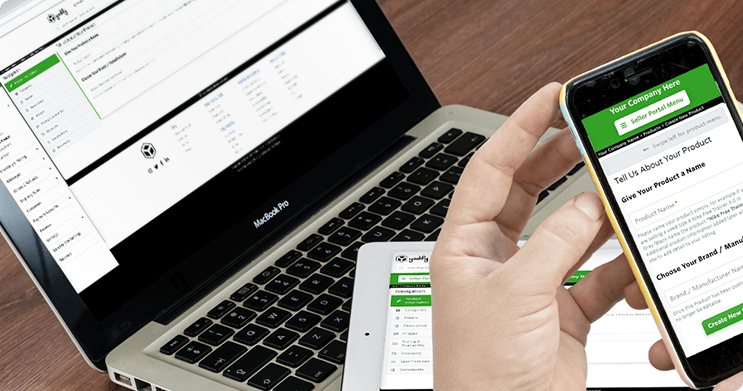
Search engines prioritize content that is both unique and delivers on what the content says it does. When potential purchasers find your links on search engines and you deliver content in a way that has them carry through your site to other pages, or engage with the page content and not just back out to the search results page it improves your site’s reputation. By using override functionality and customizing Library products in your catalog to speak directly to your customers needs, you can decrease the bounce rate of users visiting your site, build a reputation for delivering on your content, and work toward preferential ranking on future similar search terms.
Inject your site with your expertise, recommendations and supplementary content to elevate what the manufacturers provide.
We encourage our clients to take the data from the Yodify Library, and inject it with their own expertise, recommendations and supplementary content to elevate what the manufacturers provide, and speak to solutions their specific demographics require. This creates a separation for your business from other websites that simply list a few specifications and a download link, and reassures your clients that not only do you sell the products they need, you know them as well and can help find the perfect solution for every application.
Use the Override tool to customize Library products to suit your business and provide that additional layer of customer service, answer questions before they need to ask and serve your site visitors with everything they need to make an informed purchase or quote request.
Actively Drive Site Traffic
Organic traffic can take some time to build momentum, and it’s very difficult to predict or control which pages of your site will end up being the most popular amongst the swathes of internet users searching for solutions, products & services online. If there is a particular facet of your site you want people to engage with quickly and you have a specific audience in mind for that site content, you should consider setting up some paid ads through a provider like Google, Meta, LinkedIn, or others. By creating a campaign that speaks to a specific niche, you can drive highly motivated individuals to the solutions you provide. When you’re setting up your ad campaigns, keep in mind the clear goals for those ads you’ve established.
Organic traffic can take some time to build momentum, consider setting up some paid ads through a provider like Google, Meta, LinkedIn, or others.
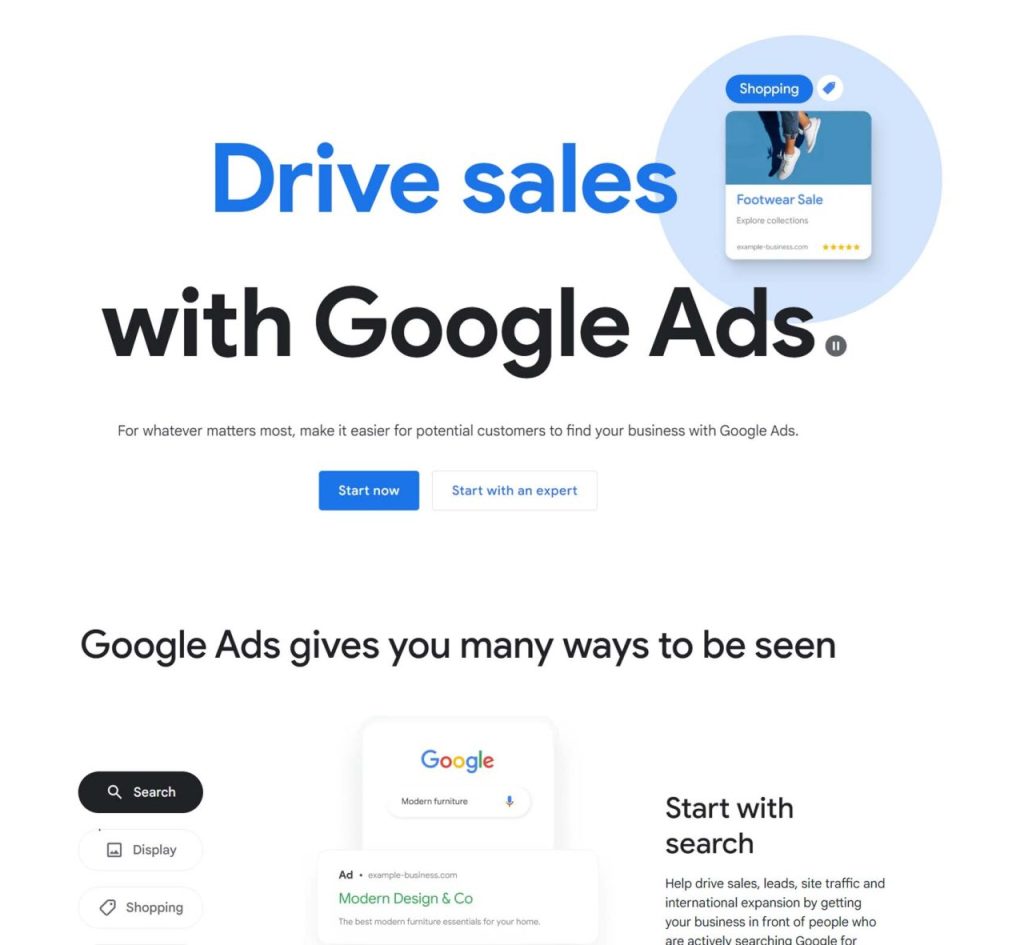
There are countless ways to advertise your business, be it through images or videos on social media, or through promoted links on search engines. Each of these has its own advantages and disadvantages, and you have to think about which option works best for the message, tone, and type of ad you’re looking to deliver. Ex. Social media is great for generating buzz, but finding a niche to speak seriously to a specific audience can be difficult (especially on Facebook, Instagram or TikTok), the context of these social media platforms is more casual, so a tonal shift from user content to your ad could be jarring and render your ad less effective than it would be on LinkedIn, or embedded in related Google search results.
Keep at It
You have already taken the greatest step in creating new opportunities for your business online. Make sure you continue to take additional steps to supplement, manage, and promote your new site.




